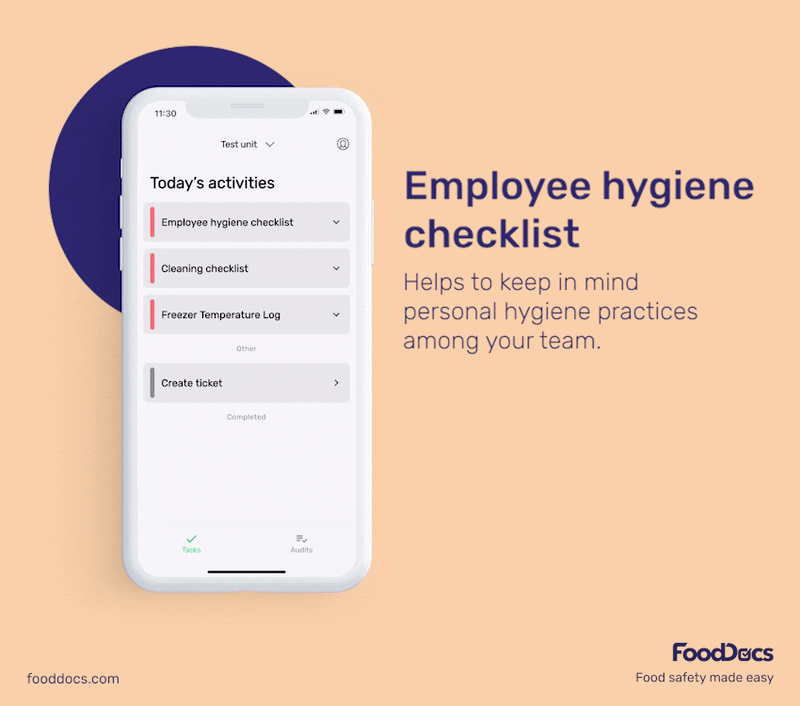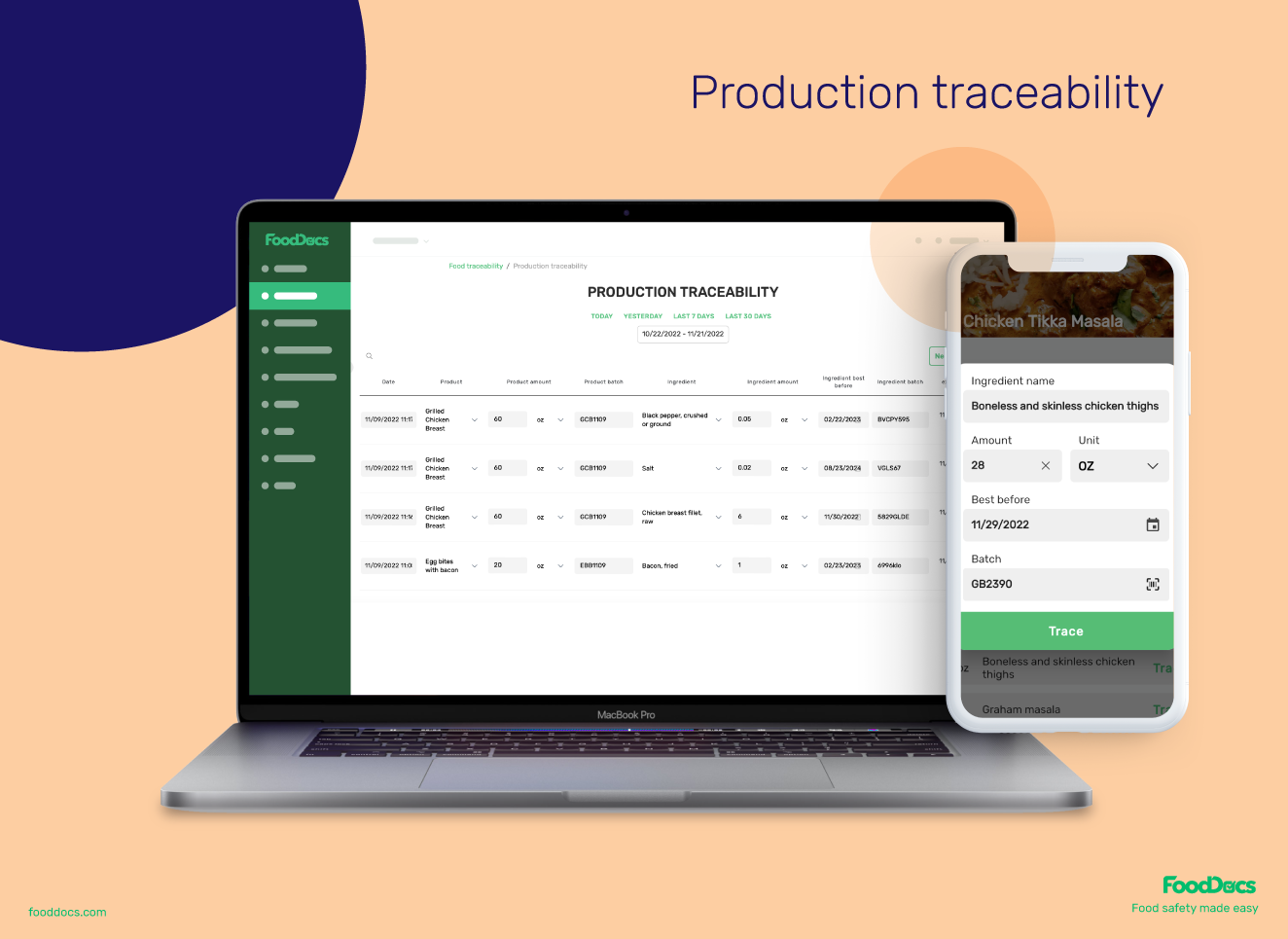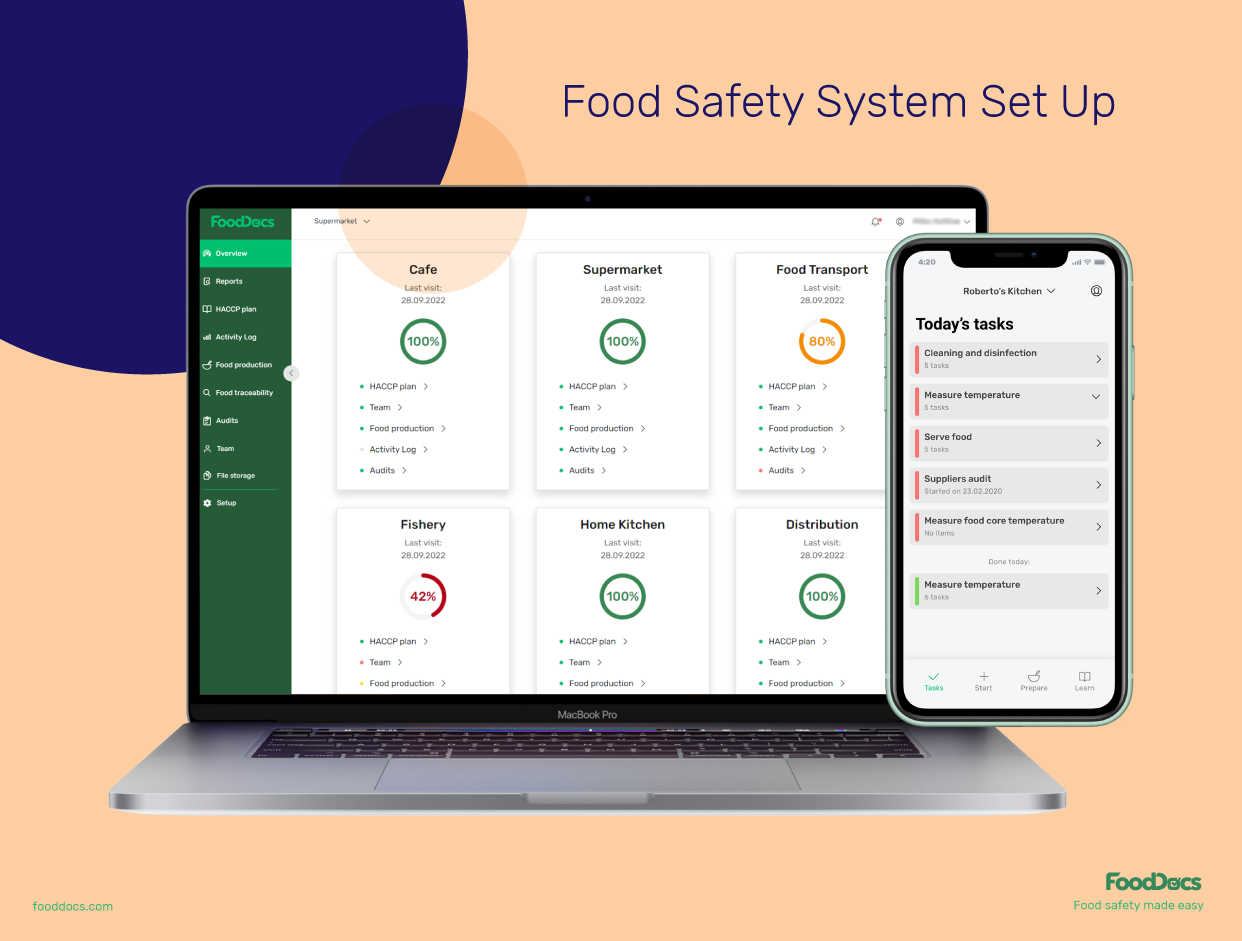Why Is Food Safety Important In Healthcare? Healthcare Leaders Guide
Learn challenges healthcare foodservice teams face today and key food safety practices to protect vulnerable patients. Get a free healthcare leader...
High-risk population groups are significantly more vulnerable to foodborne illness.
One of the top priorities of food handlers is protecting consumers from foodborne illnesses. This food safety issue can affect every member of the community. Despite this, some groups are considered high-risk because of their susceptibility to the effects of foodborne pathogens.
Food handlers are responsible for understanding who is often at high risk of food poisoning and protecting them accordingly.
In the food industry, healthy young adults are the least susceptible group to foodborne illness because these individuals often have a properly functioning immune system that can fend off foreign objects, such as harmful bacteria.
But which groups are the most susceptible to foodborne illnesses? Keep scrolling to find out.
Several factors make an individual susceptible to foodborne illnesses. These individuals can get sick faster or contract a lengthier illness than a healthy consumer, even with small amounts of bacterial load in their food. As such, they are considered priority groups when establishing food safety plans and regulations.
Get to know more about high-risk population groups from this article, and learn how our smart Food Safety Management System can help you protect them efficiently.
WHAT WE'LL COVER:
Foodborne illnesses can affect any consumer, whether healthy or not, depending on several factors. Despite this, there are groups of consumers who are more likely at a higher risk of contracting foodborne illness than others.
This means that even with a small bacterial load, they can experience adverse health consequences.
Some of the groups that are at a higher risk of getting foodborne illnesses include the following:
Below, we discuss how potential food safety hazards affect the high-risk group of customers and the responsibility of food handlers to protect them.

A highly susceptible population is a particular group of individuals who are more prone to adverse health conditions due to certain health factors. This group may either have underlying health conditions, lifestyle, immunocompromised status, or an underdeveloped immune system.
This group of individuals can become ill or contract food poisoning more likely than an average healthy person. Their body may not be able to fight off even a small amount of pathogenic bacteria in foods.
Older adults over the age of 65 are at a higher risk of contracting foodborne illness. Around this age bracket, the human immune system starts to decline significantly, making them more vulnerable to diseases.
Older individuals can experience more severe effects. In some cases, their chances of dying from simple foodborne diseases are higher.
As part of their development, children generally have weaker immune systems because they are still growing. Their immune system is still developing and acquiring the ability to fight off major foodborne illness-causing pathogens.
Children may experience heightened health conditions as their bodies cannot support the effects of foodborne illnesses yet. Simple diarrhea may lead to dehydration much faster than in a middle-aged individual.
The World Health Organization (WHO) reports that approximately 220 million children fall ill due to diarrheal diseases, with at least 96,000 casualties each year.
Pregnant women become more at risk of foodborne illnesses because of the physiological changes that occur during pregnancy.
Naturally, a woman's body weakens its immune system to prevent the body from rejecting the growing unborn baby, which can be seen as a foreign object inside the body.
This, in turn, makes the pregnant individual more prone to simple foodborne pathogens. In addition, the body of a pregnant individual is more focused on supplementing the baby's growth.
There are a lot of reasons for the body of an individual to have a weak immune system.
A common reason is due to an underlying medical condition. Some common conditions include having an autoimmune disease (e.g., AIDS and Celiac disease), recently undergoing an organ transplant, taking medications, or receiving chemotherapy.
These individuals are considered a high-risk group. A consumer may fall under more than one category, which may put them at a greater risk. As food handlers, it is part of your responsibility to protect these individuals from potential harm.
Food handlers must understand the importance of food safety and how can they protect high-risk groups from negative effects.
The most efficient way to protect these individuals from foodborne illness is to implement a comprehensive food safety management system. Use FoodDocs' smart Food Safety Management System that has smart solutions powered by artificial intelligence.
Any individual can be at risk of foodborne illness when exposed to pathogenic microorganisms. Regardless of age, gender, or health status, you can still get affected by foodborne illness.
Despite this fact, some individuals are more likely to be infected if they are exposed to even the slightest contaminated product.
According to the Centers for Disease Control and Prevention, approximately half of the individuals around 65 years old who tested positive for foodborne illnesses are hospitalized and require intensive medical attention. In addition, food safety agencies also show that pregnant women are 10x more likely to get Listeriosis than other groups of individuals.
From the yearly estimate of deaths due to foodborne illnesses by the WHO, almost 30% come from children under 5 years. Simple foodborne illnesses can escalate faster and cause other complications. Children who contract E.coli poisoning are more likely to experience hemolytic uremic syndrome (HUS), which is characterized by progressive kidney failure.
Lastly, the rate at which immunocompromised people can experience foodborne illness is also significant. For example, individuals undergoing dialysis are 50x more prone to pathogenic infection. In addition, individuals with HIV are more likely to experience prolonged effects of foodborne illnesses.
Learn more about food safety statistics from our detailed article.

In food service, the term high-risk population refers to a group of individuals who are more prone to be affected by foodborne illnesses and other health risks due to their vulnerability.
High-risk populations are significantly more vulnerable to several types of infections than healthy individuals. What may be safe for a healthy, middle-aged person with a fully developed immune system may cause adverse health effects to high-risk individuals.
The food industry provides special attention to protecting high-risk populations. In fact, these individuals are often used as standards for shaping food safety practices and regulations to come up with strict standards.
As a food safety manager, it is part of your team's responsibility to properly identify members of this population to minimize health risks for them appropriately. A part of the strict approach should be implementing strict food-handling protocols, thorough cooking, and proper allergen management.
All food handlers must be aware of the potential risks of serving these individuals with contaminated products. Employees must receive proper training and education to help protect them from food safety hazards that make food unsafe.
In the food industry, three major groups are considered to be part of the high-risk population. These groups all have immunocompromised health as a result of different conditions.
The 3 main high-risk population groups are the following:
As mentioned, all of these high-risk groups have weakened or underdeveloped immune systems. Their bodies will not be able to defend themselves from the normal amount of pathogens in food.
In addition to the mentioned groups, individuals undergoing medication and having underlying medical conditions are also prone to contracting foodborne illnesses. A common, treatable food poisoning can send these groups to the hospital and require more medical attention.
In the food industry, healthy young adults are regarded as the least susceptible group to foodborne illness. This is because these individuals have a properly functioning immune system that can fend off foreign objects, such as harmful bacteria.
A healthy individual is described as someone who has an active and healthy lifestyle, a working immune system, has no underlying medical conditions, and eats healthy food.
It is important to note that healthy individuals are not exempt from contracting foodborne illnesses. When food is contaminated with a significant amount of foodborne pathogens, healthy individuals can still get sick.
The susceptibility of vulnerable people to foodborne illness greatly varies depending on various factors. The most effective way to prevent cases of foodborne illnesses is to practice proper food handling.
Check out our article about the 4 steps of food safety, which summarizes the key practices that will help prevent foodborne illnesses.

Food handlers are trained to handle food as if everyone is part of the high-risk population. This thinking helps them ensure that all food products that they prepare are safe for consumption by everyone.
Because some food products are highly associated with food spoilage and known foodborne pathogens, high-risk population groups are often advised to take precautions when consuming them.
Below are some of the high-risk groups of foods that immunocompromised individuals are advised not to eat or lessen consumption.
These foods are also considered highly perishable foods. A part of a food handler's responsibility is to disclose the risk of consuming these products to high-risk population groups. Food handlers are required to present a consumer advisory in print or verbally, which discloses the risks of consuming raw or undercooked foods.
Food businesses, by default, are mandated to cook all foods thoroughly to the recommended internal temperature for cooking. This operation is one of the most effective methods to ensure that foods are safe for consumption and will not cause foodborne illness for healthy and immunocompromised individuals.
Food businesses are required to protect public health by following strict food safety rules and regulations. One of the main causes of foodborne illness is unsafe food preparation, which can be easily addressed with simple activities.
Below, we list the most critical and practical rules and tips to reduce the risk of foodborne illness in every food business.
The key to ensuring food safety is to maintain these practices in food safety consistently. This ensures that bacterial growth is controlled. Use FoodDocs' digital Food Safety Management System and get smart solutions for monitoring and tracking your operations and products.
Using our smart software, you can automatically get digital monitoring logs and checklists that you can use to ensure that all of your food safety tasks are done. You will also get a Traceability System that can help your team intuitively track the shelf-life of your products.
Food handlers are in constant battle with the risks of foodborne illnesses. Every operation in the food business must follow food safety regulations to ensure that both healthy and immunocompromised individuals will be safe from any potential food safety issue.
When serving foods to highly susceptible populations, food handlers must keep the following points in mind:
It is also important to remember that even low-risk foods can be contaminated if food safety practices are not exercised.
Our smart software can provide you with the following features and benefits that will help you perform food safety tasks intuitively:


When you use our smart Food Safety Management System, you can get more than just these features. Our system can also provide features to help you improve management efficiency:

Protect both high-risk and healthy consumers from foodborne illnesses by ensuring that your food business is compliant with food safety regulations. You can easily update digital food safety documents from our system with a few clicks. Apply suggestions from consultants and inspectors right away, as our system is customizable.
Keep your operations updated at all times and adapt to the essential measure for protecting high-risk consumers. Allow our smart solutions to help you maintain compliance at all times.
Experience the convenience and value of our smart Food Safety Management System today by using our free 14-day trial.
We gathered some of the most frequently asked questions about high-risk population groups to shed more light on this topic.
Although there is no specific age group that can be identified as the least vulnerable to foodborne illness, healthy adults are less likely to be affected. In general, the immune system of a person fully develops during the first 7 to 8 years of living.
As previously described, the immune system of an individual starts to decline around 65 years old significantly. Despite this, individuals in between this range can still be affected by foodborne illness depending on their lifestyle and other medical conditions.
Foodborne illnesses can occur anywhere where food is mishandled, and food safety precautions are not practiced. They can occur in food service businesses or private homes.
Some examples of high-risk foods include the following:
High-risk customer groups, or those that are more prone to contracting a foodborne illness, include the following:
Learn challenges healthcare foodservice teams face today and key food safety practices to protect vulnerable patients. Get a free healthcare leader...
Learn what Standard Operating Procedures (SOPs) are and how to write effective SOPs that ensure consistency, efficiency, and safety in your...
Boost your retail food safety with essential practices and digital tools to protect customers and your brand. Plus a free Retail Food Safety Leader...